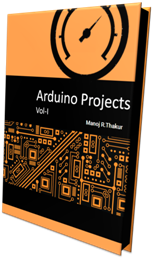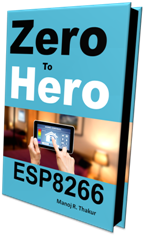The Serial Port
is harder to interface than the Parallel
Port.
So what are the
advantages of using serial data transfer rather than parallel?
1. Serial Cables
can be longer than Parallel cables. The serial port transmits a '1' as -3 to
-25 volts and a '0' as +3 to +25 volts where as a parallel port transmits a '0'
as 0v and a '1' as 5v. Therefore the serial port can have a maximum swing of
50V compared to the parallel port which has a maximum swing of 5 Volts.
Therefore cable loss is not going to be as much of a problem for serial cables
than they are for parallel.
2. You don't need
as many wires than parallel transmission. If your device needs to be mounted a
far distance away from the computer then 3 core cable (Null Modem
Configuration) is going to be a lot cheaper that running 19 or 25 core cable.
However you must take into account the cost of the interfacing at each end.
3. Infra Red
devices have proven quite popular recently. You may of seen many electronic
diaries and palmtop computers which have infra red capabilities build in.
However could you imagine transmitting 8 bits of data at the one time across
the room and being able to (from the devices point of view) decipher which bits
are which? Therefore serial transmission is used where one bit is sent at a
time. IrDA-1 (The first infra red specifications) was capable of 115.2k baud
and was interfaced into a UART. The pulse length however was cut down to 3/16th
of a RS232 bit length to conserve power considering these devices are mainly
used on diaries, laptops and palmtops.
4.
Microcontroller's have also proven to be quite popular recently. Many of these
have in built SCI (Serial Communications Interfaces) which can be used to talk
to the outside world. Serial Communication reduces the pin count of these
MPU's. Only two pins are commonly used, Transmit Data (TXD) and Receive Data
(RXD) compared with at least 8 pins if you use a 8 bit Parallel method (You may
also require a Strobe).
Hardware Properties
Devices which use serial cables for
their communication are split into two categories. These are DCE (Data
Communications Equipment) and DTE (Data Terminal Equipment.) Data
Communications Equipment are devices such as your modem, TA adapter, plotter
etc while Data Terminal Equipment is your Computer or Terminal. The electrical
specifications of the serial port is contained in the EIA (Electronics Industry
Association) RS232C standard. It states many parameters such as -
1. A
"Space" (logic 0) will be between +3 and +25 Volts.
2. A
"Mark" (Logic 1) will be between -3 and -25 Volts.
3. The region
between +3 and -3 volts is undefined.
4. An open circuit
voltage should never exceed 25 volts. (In Reference to GND)
5. A short circuit
current should not exceed 500mA. The driver should be able to handle this
without damage. (Take note of this one!)
are male on the back of the PC, thus you will require a female connector on your device. Below is a table of pin connections for the 9 pin and 25 pin D-Type connectors.
Serial
Pinouts (D25 and D9 Connectors)
D-Type-25 PinNo.
D-Type-9 Pin No. Abbreviation
Full Name
Pin 2
Pin 3 TxD
Transmit Data
Pin 3
Pin 2 RxD
Receive Data
Pin 4
Pin 7 RTS
Request To Send
Pin 5 Pin
8 CTS
Clear To Send
Pin 6
Pin 6 DSR Data
Set Ready
Pin 7
Pin 5 SG Signal
Ground
Pin 8
Pin 1 CD
Carrier Detect
Pin
20 Pin 4 DTR Data
Terminal Ready
Pin 22 Pin
9 RI
Ring Indicator
Pin
Functions
Abbreviation
|
Full Name
|
Function
|
TD
|
Transmit Data
|
Serial Data Output (TXD)
|
RD
|
Receive Data
|
Serial Data Input (RXD)
|
CTS
|
Clear to Send
|
This line indicates that the Modem is ready to
exchange data.
|
DCD
|
Data Carrier
Detect
|
When the modem detects a "Carrier"
from the modem at the other end of the phone line, this Line becomes active.
|
DSR
|
Data Set Ready
|
This
tells the UART that the modem is ready to establish a link.
|
DTR
|
Data Terminal
Ready
|
This is the opposite to DSR. This tells the
Modem that the UART is ready to link.
|
RTS
|
Request To Send
|
This line
informs the Modem that the UART is ready to exchange data.
|
RI
|
Ring Indicator
|
Goes
active when modem detects a ringing signal from the PSTN.
|
Null Modems
A Null Modem is
used to connect two DTE's together. This is commonly used as a cheap way to
network games or to transfer files between computers using Zmodem Protocol,
Xmodem Protocol etc. This can also be used with many Microprocessor Development
Systems.
DB9 DB9
3 TxD --------------------> RxD 2
2 RxD --------------------> TxD 3
5 GND<------------------> GND 5
Above is my
preferred method of wiring a Null Modem. It only requires 3 wires (TD, RD &
SG) to be wired straight through thus is more cost effective to use with long
cable runs. The theory of operation is reasonably easy. The aim is to make to
computer think it is talking to a modem rather than another computer. Any data
transmitted from the first computer must be received by the second thus TD is
connected to RD. The second computer must have the same set-up thus RD is
connected to TD. Signal Ground (SG) must also be connected so both grounds are
common to each computer.
The Data Terminal Ready is looped
back to Data Set Ready and Carrier Detect on both
computers. When
the Data Terminal Ready is asserted active, then the Data Set Ready and Carrier
Detect immediately
become active. At this point the computer thinks the Virtual Modem to which it
is connected is ready and has detected the carrier of the other modem.
All left to worry about now is the
Request to Send and Clear To Send. As both computers
communicate
together at the same speed, flow control is not needed thus these two lines are
also linked together on each computer. When the computer wishes to send data,
it asserts the Request to Send high and as it's hooked together with the Clear
to Send, It immediately gets a reply that it is ok to send and does so.
Notice that the ring indicator is
not connected to anything of each end. This line is only used to tell the
computer that there is a ringing signal on the phone line. As we don't have a
modem connected to the phone line this is left disconnected.
Flow
Control
So if our DTE to
DCE speed is several times faster than our DCE to DCE speed the PC can send
data to your modem at 115,200 BPS. Sooner or later data is going to get lost as
buffers overflow, thus flow control is used. Flow control has two basic
varieties, Hardware or Software.
Software flow control, sometimes
expressed as Xon/Xoff uses two characters Xon and Xoff. Xon is normally
indicated by the ASCII 17 character where as the ASCII 19 character is used for
Xoff. The modem will only have a small buffer so when the computer fills it up
the modem sends a Xoff character to tell the computer to stop sending data.
Once the modem has room for more data it then sends a Xon character and the
computer sends more data. This type of flow control has the advantage that it
doesn't require any more wires as the characters are sent via the TD/RD lines.
However on slow links each character requires 10 bits which can slow
communications down.
Hardware flow control is also known
as RTS/CTS flow control. It uses two wires in your serial cable rather than
extra characters transmitted in your data lines. Thus hardware flow control
will not slow down transmission times like Xon-Xoff does. When the computer
wishes to send data it takes active the Request to Send line. If the modem has
room for this data, then the modem will reply by taking active the Clear to
Send line and the computer starts sending data. If the modem does not have the
room then it will not send a Clear to Send.
RS-232
Waveforms
So far we have introduced RS-232
Communications in relation to the PC. RS-232 communication is asynchronous.
That is a clock signal is not sent with the data. Each word is synchronized
using it's start bit, and an internal clock on each side, keeps tabs on the
timing.
The diagram above,
shows the expected waveform from the UART when using the common 8N1 format. 8N1
signifies 8 Data bits, No Parity and 1 Stop Bit. The RS-232 line, when idle is
in the Mark State
The diagram, shows the next bit
after the Stop Bit to be Logic 0. This must mean another word is following, and
this is it's Start Bit. If there is no more data coming then the receive line
will stay in it's idle state(logic 1). We have encountered something called a
"Break" Signal. This is when the data line is held in a Logic 0 state
for a time long enough to send an entire word. Therefore if you don't put the
line back into an idle state, then the receiving end will interpret this as a
break signal.
The data sent using this method, is
said to be framed. That is the data is framed between a Start and
Stop Bit. Should the Stop Bit be received as a Logic 0, then a framing error
will occur. This is common, when both sides are communicating at different
speeds.
The above diagram is only relevant
for the signal immediately at the UART. RS-232 logic levels uses +3 to +25
volts to signify a "Space" (Logic 0) and -3 to -25 volts for a
"Mark" (logic 1). Any voltage in between these regions (ie between +3
and -3 Volts) is undefined. Therefore this signal is putthrough a "RS-232
Level Converter". This is the signal present on the RS-232 Port of your
computer, shown below.
The above waveform
applies to the Transmit and Receive lines on the RS-232 port. These lines carry
serial data, hence the name Serial
Port.
RS-232 Level
Converters
Almost all digital devices which we
use require either TTL or CMOS logic levels. Therefore the first step to
connecting a device to the RS-232 port is to transform the RS-232 levels back
into 0 and 5 Volts. As we have already covered, this is done by RS-232 Level
Converters.
Two common RS-232 Level Converters are the 1488 RS-232
Driver and the 1489 RS-232 Receiver. Each package contains 4 inverters of the
one type, either Drivers or Receivers. The driver requires two supply rails,
+7.5 to +15v and -7.5 to -15v. As you could imagine this may pose
Another device is the MAX-232. It
includes a Charge Pump, which generates +10V and -10V
from a single 5v supply. This I.C. also
includes two receivers and two transmitters in the same package.
This is handy in many cases when you
only want to use the Transmit and Receive data Lines. You don't need to use two
chips, one for the receive line and one for the transmit. However all this
convenience comes at a price, but compared with the price of designing a new
power supply it is very cheap.
There are also many variations of
these devices. The large value of capacitors are not only bulky, but also
expensive. Therefore other devices are available which use smaller capacitors
and even some with inbuilt capacitors. (Note : Some MAX-232's can use 1
micro farad Capacitors). However the MAX-232 is the most common, and thus
we will use this RS-232 Level Converter in our examples.








No comments:
Post a Comment